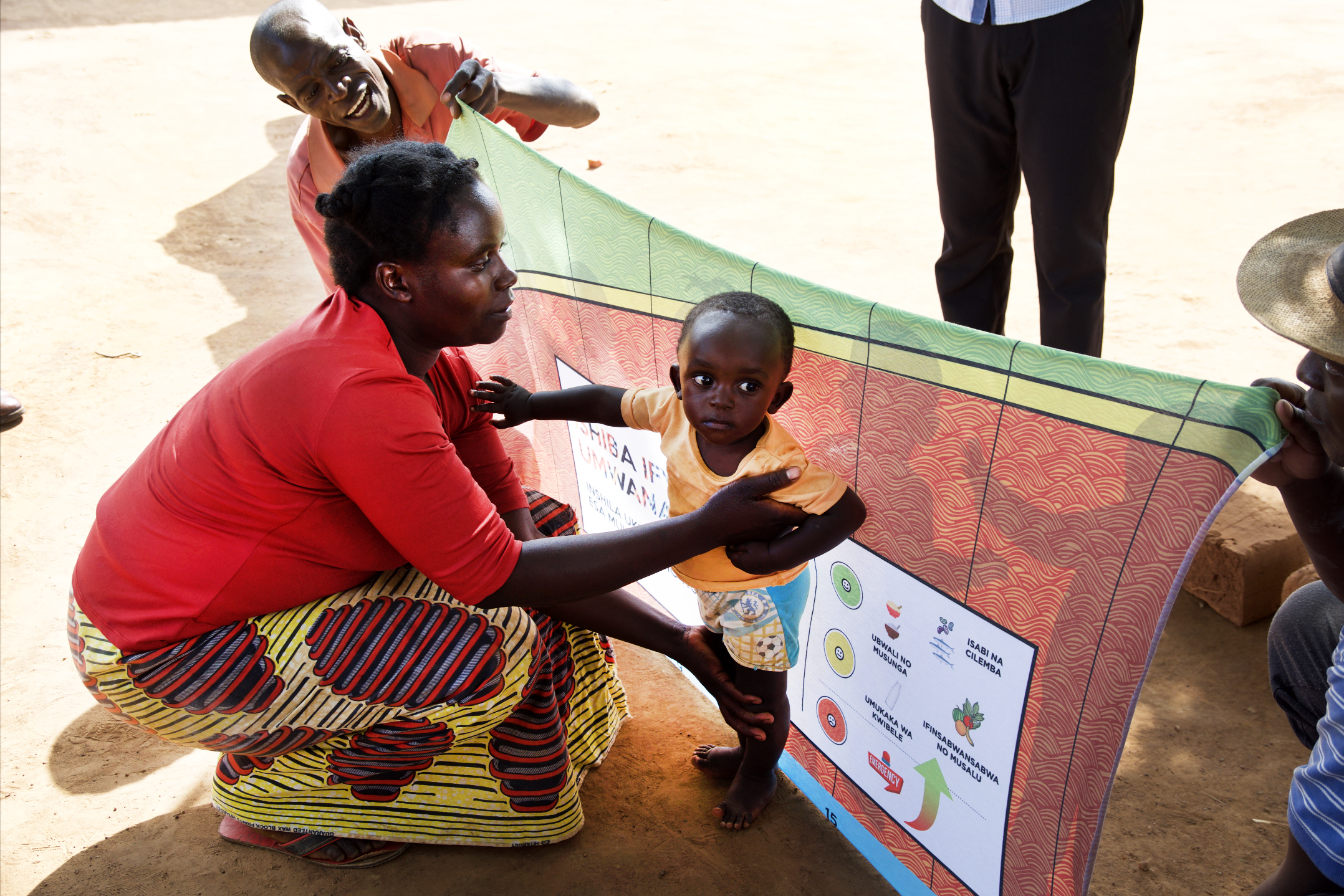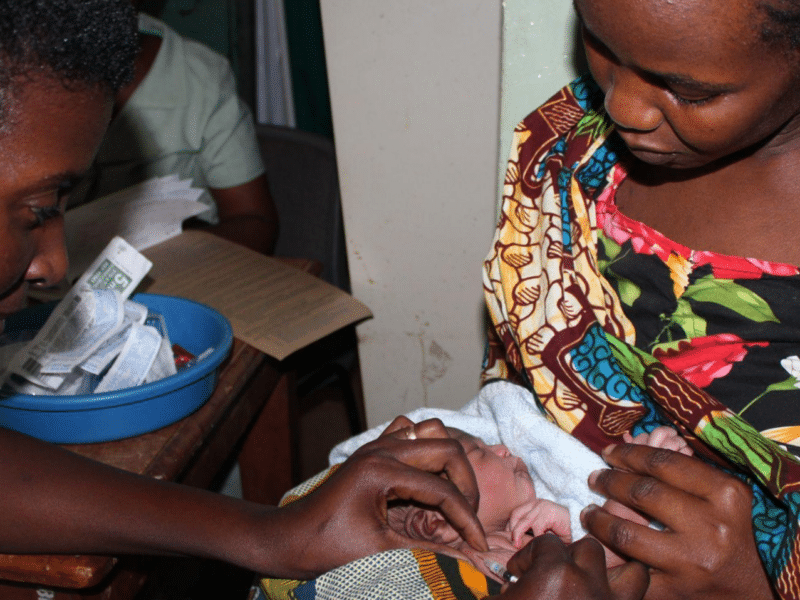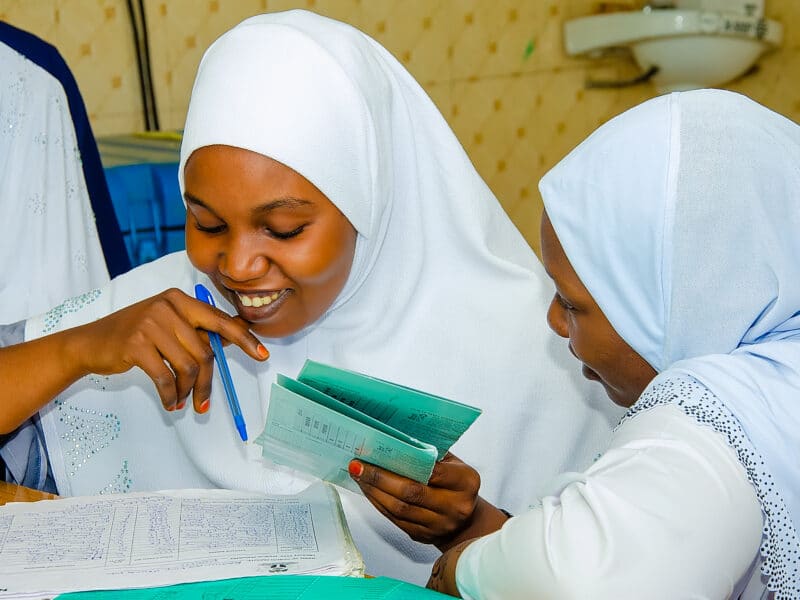Four in 10 young children in Zambia are stunted, or too short for their age, primarily the result of malnutrition.
Lacking a frame of reference, their caregivers often don’t even know there is anything amiss. The other children they see on a daily basis also tend to lack proper nutrition and are small for their age.

A caregiver tests an early version of the chitenge growth chart being given to families to track stunting and help the malnourished take action.
The Johns Hopkins Center for Communication Programs, through its Breakthrough ACTION Zambia project, set out to empower families to monitor the growth of their children at home and to take action if they learn their children aren’t developing properly, be it adding a wider range of healthy foods to their diets or seeking medical help.
They’re doing it with a familiar piece of cloth called a chitenge, an African garment similar to the sarong, often worn by women, wrapped around the chest or waist, over the head as a headscarf or as a baby sling.
This chitenge doubles as a length-for-age chart. Caregivers spread the cloth on the floor or a table and lay the child atop their age range, from zero to 24 months. Children who fall in the red section are stunted, children who fall in the yellow section are close to becoming stunted and children in the green section are a healthy length. Those in the red section are told to seek medical help as soon as possible from a nearby health facility.
“This brightly colored, portable cloth growth monitoring chart is a convenient way to help families understand whether their children are malnourished,” says Lydia Trupe, innovations advisor for Breakthrough ACTION Zambia. “It not only raises awareness of the effects of malnutrition, but it lets families know they can take steps to ensure their children are getting the right mix of foods in their diets.”
The chitenge are being distributed to more than 1,000 households in three Zambian provinces along with a photo-heavy nutrition guide and feeding bowl for each child. The guide recommends which locally available vegetables and proteins should be given to children to help them grow, while the bowl ensures that the child gets enough to eat in a culture where families typically eat out of a communal bowl. All adult caregivers are trained in how to use the growth charts to make better nutrition a family concern, not just one that falls on mothers who may not have the power to make decisions on what food to buy.
The recommendation is for children to be exclusively breastfed until six months and then gradually be given solid foods after that. Breakthrough ACTION’s research found that only 11 percent of Zambian children were receiving optimal complementary feeding.
The chitenge, guide and food bowl concepts were developed through a human-centered design process and based on earlier work by Innovations for Poverty Action, which distributed canvas charts in the area of Chipata in Zambia’s eastern province. That pilot was successful in reducing malnutrition by 22 percentage points in the places it was used. The Breakthrough ACTION team built upon that success, by incorporating an easier-to-store cloth material and including information right on the cloth about what to do in the case the child lands in the red zone.
When families do take their young children to the health facility for checkups and vaccinations, there isn’t always time for in-depth conversations about nutrition. CCP hopes this initiative will fill in those gaps.
“It’s not enough to just raise awareness about malnutrition – that’s necessary but not sufficient to change behavior,” Trupe says. “We are working to enable Zambian families to take appropriate action. That is how things will improve and children will thrive.”
“All mothers want to see their children grow up healthy,” says CCP’s Chime Mukwakwa, the chief of party in Zambia. “This chitenge will ensure that mothers, some of whom may not be able to regularly go to health facility due to long distance or a busy schedule at home, know how that growth is progressing.”




